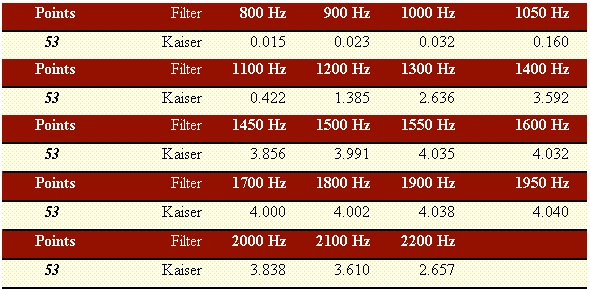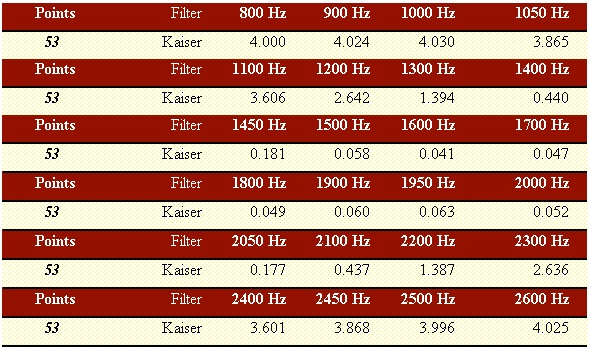4.5: Experimental Results


As for the IIR filter case, in this section we report some results for the FIR filters. The tests have been performed with the minimum number of poles necessary to filter the signal in real time. We required an attenuation of 0.1 dB for the pass band, and 40 dB for the rejection band. Further, we selected a sampling frequency equal to 10 kHz. The bandwidth for the transition band is 500Hz and the maximum frequency for the pass band is 1000 Hz.
Table 4.2 reports the results for a lowpass filter designed with a 53-point Kaiser window. The input signal is a sinusoid with amplitude of 4V and a variable frequency in the range from 800 to 1600 Hz.

Table 4.2.
For the other filters there is no a minimum number of poles. However, we have the estimation. With the same specifications as above described, we obtained a values equal to 45.

Table 4.3.
For the highpass, bandpass, and bandstop filters, we report the example of the Kaiser window.
HIGHPASS: the maximum frequency of the rejection band is 1 kHz, and the minimum of the pass band is 1500 Hz.

Table 4.4.
BANDPASS: the cutoff frequencies of the rejection bands are 1 kHz and 2.5 kHz. The cutoff frequencies of the pass band are 1.5 kHz and 2 kHz.

Table 4.5.
BANDSTOP: the cutoff frequencies of the pass bands are 1 kHz and 2.5 kHz. The cutoff frequencies of the rejection band are 1.5 kHz and 2 kHz.

Table 4.6.